Weather Teaching Resources
Browse printable weather worksheets, activities, science vocabulary resources, experiments for kids, resources about floods and natural disasters and more ideas for teaching students in primary school about the weather outside your classroom and around the world.
This collection of curriculum-aligned weather teaching resources was created by teachers with teachers in mind. That means every printable and digital resource has been carefully checked by a member of our expert teacher team to ensure it's classroom-ready, so you save time on your lesson plans!
Looking to get started on the weather, or just need more ways to make this science topic more engaging in your classroom? Read on for a primer from our teacher team!
What Is Weather? A Kid-Friendly Definition
When it comes to defining weather for students, here's a kid-friendly definition you can use to explain what weather is:
Weather refers to the conditions in the Earth's atmosphere, such as temperature, wind, precipitation and cloudiness. The weather outside your classroom or home is affected by many things, including the amount of sunlight reaching the Earth's surface, the rotation of the Earth and the presence of water vapour in the atmosphere.
Weather can change rapidly, and it can be unpredictable, so it's important to stay informed about current weather conditions and be prepared for different types of weather.
What Is Weather Science?
Meteorology — also known as weather science — is the study of the Earth's atmosphere and the weather conditions that occur within it. This includes studying temperature, air pressure, wind, precipitation and other atmospheric phenomena.
Weather scientists known as meteorologists use a variety of tools, such as satellites, radar and weather balloons, to collect data about the atmosphere and predict what the weather will be like in the future. These predictions are called weather forecasts and help us decide what to wear or how to plan for outdoor activities that might be affected by rain or excessive heat.
Weather science isn't just important for telling us what to wear, however! It helps us prepare for extreme weather events, provides important information for transportation and aviation safety and helps scientists better understand the Earth's climate.
Students can act as amateur meteorologists as they learn to record weather information to keep track of what is going on outside of your classroom, including relative temperatures such as hot or cold, clear or cloudy, calm or windy and rainy or icy!
Is Climate the Same as Weather?
The two words are often used interchangeably, but it's important to impress upon your students that weather and climate are two very different things!
Weather, as we already explained, deals with the conditions of Earth's atmosphere at any given time. It can be termed as the short-term atmospheric conditions of a specific place — such as temperature, wind, humidity, precipitation and cloud cover — over a short period of time, usually a few hours or days.
Climate, on the other hand, is a look at those conditions over a long period of time. It can be termed as the long-term average weather patterns of a specific region or location, usually over a period of at least 30 years.
What Do Kids Need to Learn About Weather?
Weather is a broad, broad topic — to say the least! So what's going on during primary school weather lessons? Before kids move on to high school, they should have a basic understanding of the different elements that make up the weather and how they interact with each other. They'll also need to understand weather forecasts and how to use them to plan.
With that in mind, here are the biggest topics to cover:
- Temperature — Learning how to measure temperature using a thermometer and how temperature changes over time, as well as the difference between Celsius and Fahrenheit, are part of weather lessons at this stage of kids' education.
- Precipitation — Young students learn about different types of precipitation — such as rain, snow, sleet and hail — and how they form in the atmosphere.
- Wind — Wind direction and speed, how wind is measured and how it affects the weather should all be covered before kids head off to secondary school.
- Clouds — From cumulus to strato-form, students learn about the different types of clouds and how they form plus how clouds affect the weather.
- Extreme Weather — Extreme weather events such as hurricanes, floods and thunderstorms are typically part of the science curriculum at this stage, and depending on where you are teaching instruction on how to stay safe during these events may well be on the agenda.
- Plus Plan

Printable Windsock Craft Template - Stars
Make a fun Windsock Craft to observe wind movement inside and outside the classroom.
- Free Plan
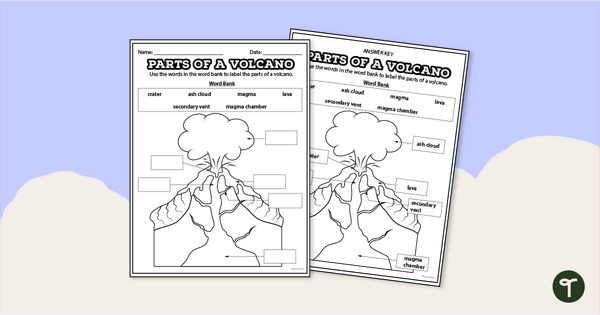
Diagram of a Volcano - Labelling Worksheet
Label the volcano diagram with a printable worksheet.
- Free Plan
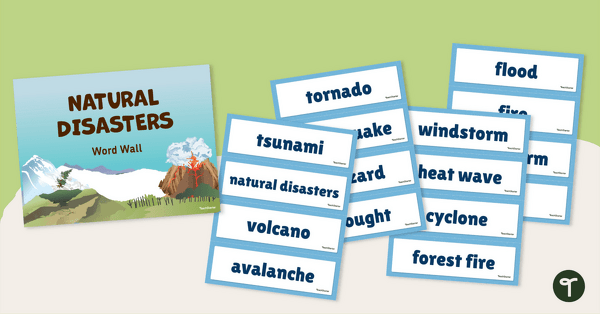
Natural Disaster Word Wall Vocabulary
Use this teacher-created resource to explore natural disaster vocabulary with your primary school students.
- Free Plan
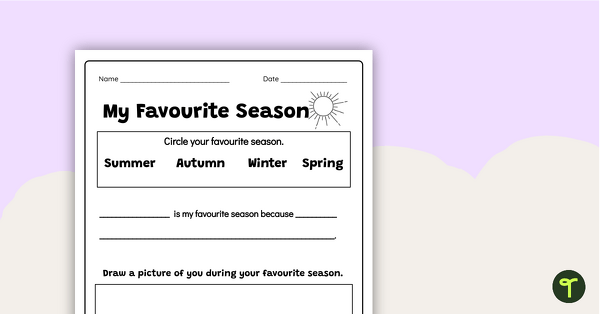
My Favourite Season Worksheet
Activate your students' prior knowledge about the seasons using this worksheet which prompts them to state which is their favourite season and justify their choice.
- Plus Plan
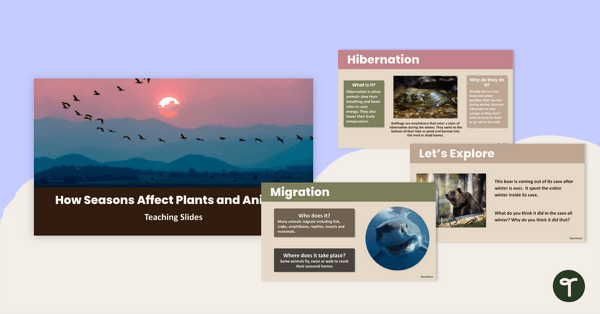
How Seasons Affect Plants and Animals Teaching Slides
Share this informational slide deck with your Grade One class to teach students about how seasons affect plants and animals on planet Earth.
- Plus Plan

Seasons Affect Plants and Animals Flipbook
Use this fun flipbook to teach students how the seasons affect plants and animals while allowing them to connect to prior knowledge by answering questions on each page.
- Plus Plan
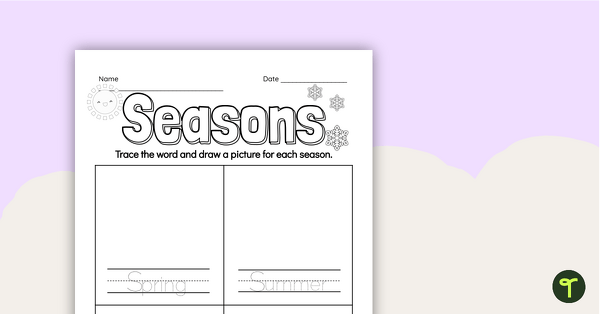
Grade One Seasons Worksheet
Set this seasons worksheet as a task for your Grade Ones to show their knowledge of the seasons' names and their order.
- Plus Plan
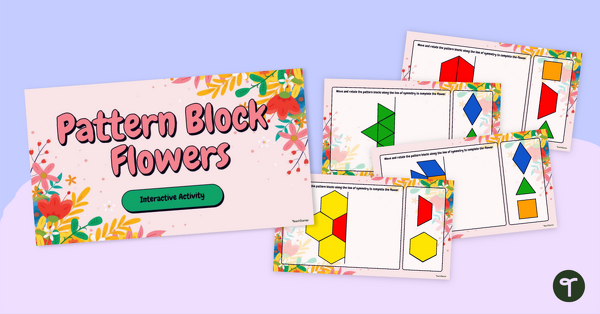
Pattern Block Flowers Interactive
Use this flower-themed interactive activity for your students to practise using manipulatives to create or expand on shapes using a pattern or symmetry model.
- Plus Plan
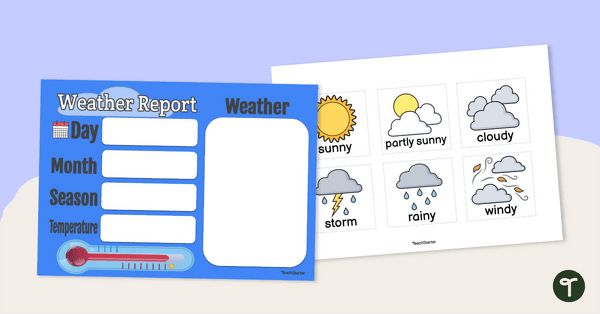
Classroom Weather Chart for Identifying Environmental Conditions
Use this fun classroom weather chart in your morning meetings to help students visualise the weather and changes in the environment due to the changing seasons.
- Plus Plan
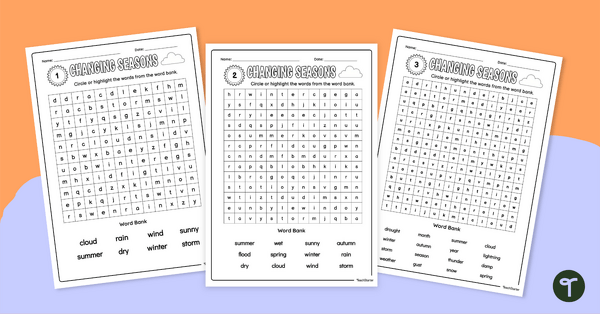
Seasonal Changes Differentiated Word Search
Get your students’ minds buzzing with this word search seasons activity, while they build their scientific vocabulary about Earth and space sciences.
- Plus Plan

Order of Seasons Interactive Activity
Explore the order of the seasons with your students by travelling through times of the year in this interactive adventure.
- Plus Plan
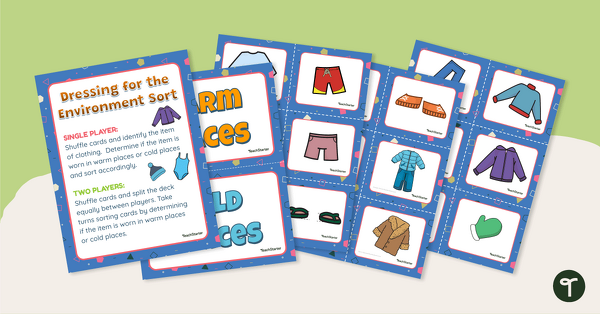
Dressing for the Physical Environment Sorting Activity
Help children learn about dressing for the environment by sorting clothing items into categories for warm climate and cold climate.
- Plus Plan

Four Seasons Picture Sorting – Cut and Paste Worksheets
Sort pictures according to the season they represent with this cut-and-paste worksheet.
- Plus Plan
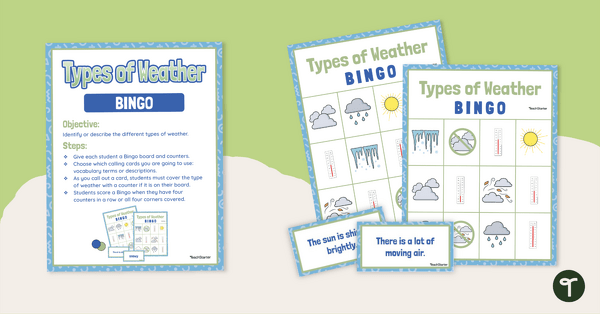
Types of Weather Bingo
Identify basic weather vocabulary terms such as windy, cloudy, snowy, cold, etc., with an exciting game of Bingo!
- Free Plan
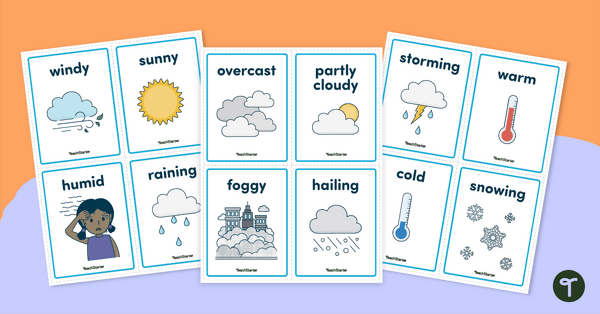
Flashcards About Weather - Printable Picture Cards
Use this set of 12 flashcards about weather to explore words that cover terms such as sunny, humid, overcast and foggy.
- Plus Plan
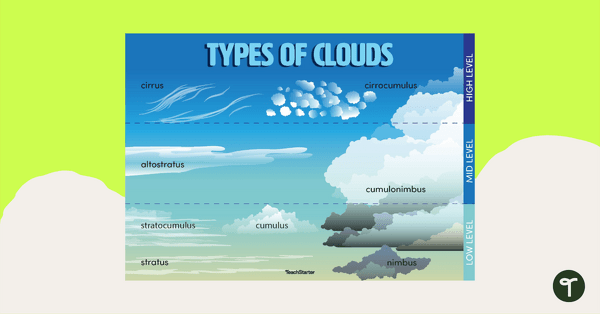
Clouds and Their Position – Poster
Learn about the different types of clouds and their position within the atmosphere with this printable poster.
- Free Plan
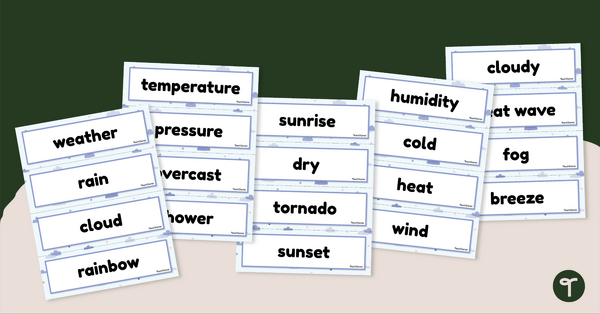
Weather Word Wall Vocabulary
Use this teacher-created weather resource to teach weather vocabulary. Build a weather word wall with your students during your weather lessons.
- Plus Plan
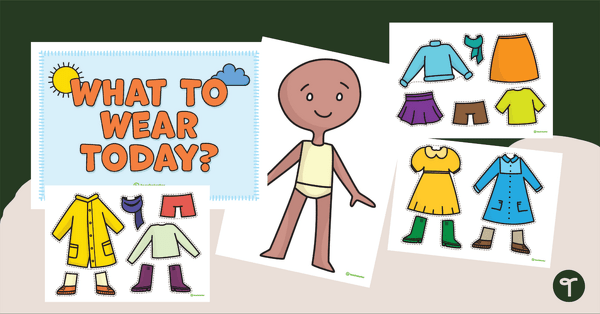
What to Wear Today? – Classroom Display
An interactive classroom display where students update the clothes the character is wearing each day based on the weather.
- Free Plan
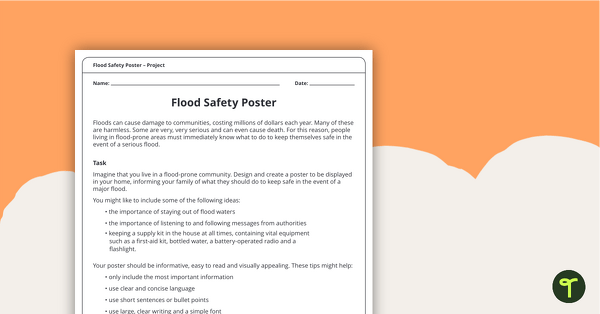
Flood Safety Poster - Design and Create Task
A design and create task for students to demonstrate their understanding of the impact of floods.
- Plus Plan

Types of Clouds - Identifier
Help your students identify the clouds in the sky with this cloud identifier.
- Plus Plan
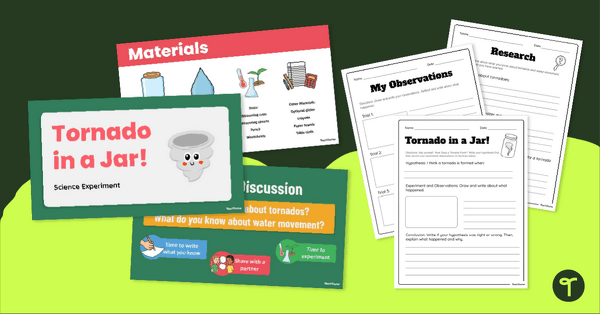
Tornado in a Jar Experiment
Create a Tornado in a Jar with an interactive science experiment slide deck and Tornado in a Jar Experiment Worksheet.
- Plus Plan
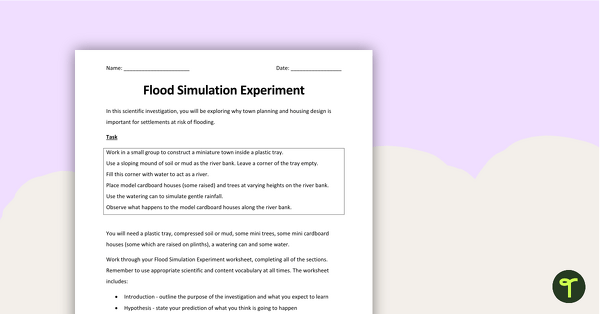
Natural Disasters - Flood Simulation Experiment
A hands-on experiment to use when exploring natural disasters.
- Plus Plan
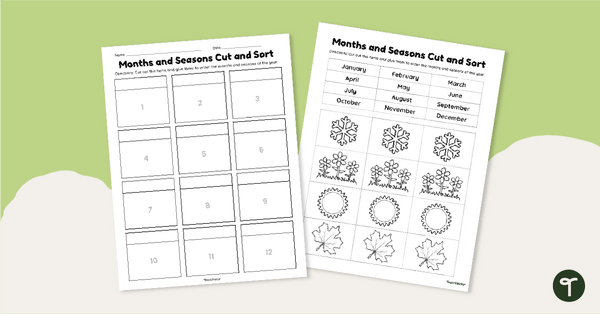
Months and Seasons Worksheet - Matching Activity
Order the months of the year and match them with their corresponding seasons with a cut-and-paste activity.
- Plus Plan
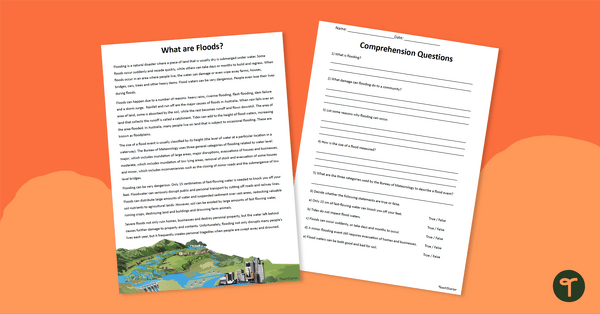
What Are Floods? Comprehension Worksheet
Read and learn about flooding with a printable reading comprehension worksheet.
- Plus Plan
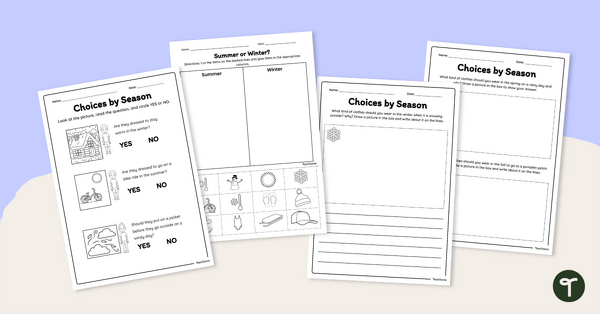
Seasons, Weather and Our Choices Worksheets
Hand out these eight great seasons worksheets to help your students learn all about the seasonal changes and the way they affect our everyday choices.
- Plus Plan
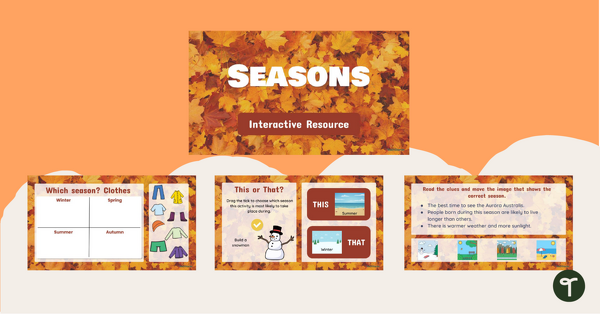
Characteristics of Seasons Interactive Activity
Use this activity-packed interactive resource to explore with your students the names and characteristics of summer, autumn, winter and spring!
- Plus Plan
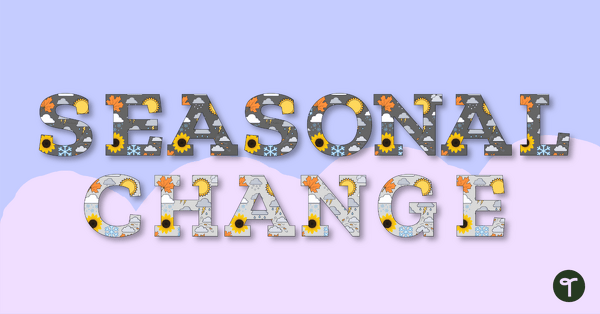
Seasonal Change Display Banner Lettering
Create a science display board for your Seasons unit, beginning with this visually engaging Seasonal Changes banner.
- Plus Plan

Seasonal Changes in Plants Posters
Display these seasonal plants posters to show your students the variations in fruit, vegetable and plant growth across Earth’s four seasons.
- Plus Plan
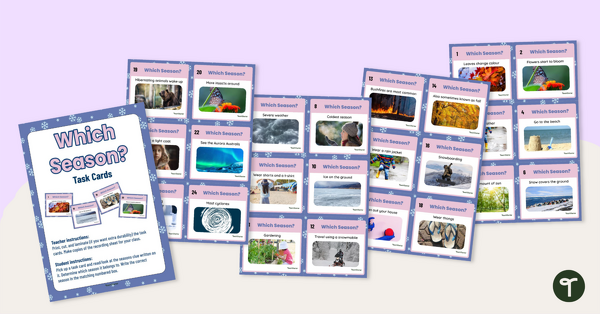
Season Characteristics Task Cards
Give your students the clues and watch them select the mystery season with this set of 24 task cards.
- Plus Plan
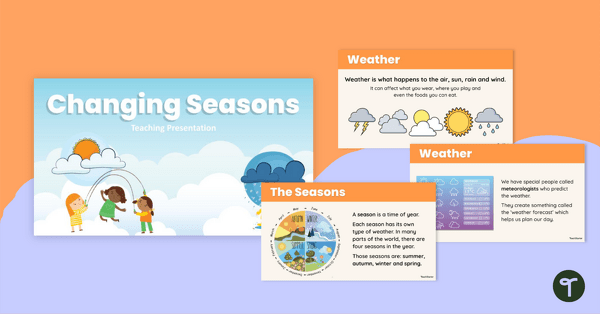
Seasonal Changes Teaching Presentation
Show your students this 26-slide teaching presentation all about the changing seasons, and develop their understanding of seasonal changes in the environment.
- Plus Plan

Order of Seasons Task Cards
Use these task cards to allow students to practise ordering images of seasonal changes across the year.
- Plus Plan
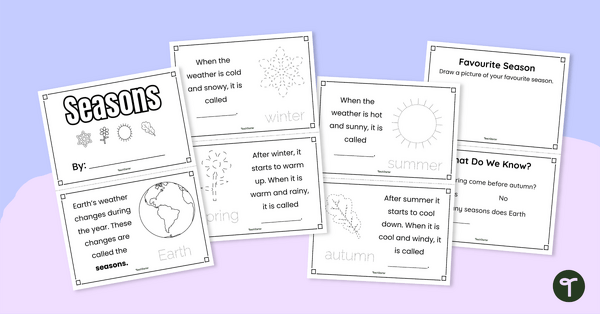
Four Seasons Mini Book
Make learning about the four seasons fun with this marvellous minibook for your Foundation students!